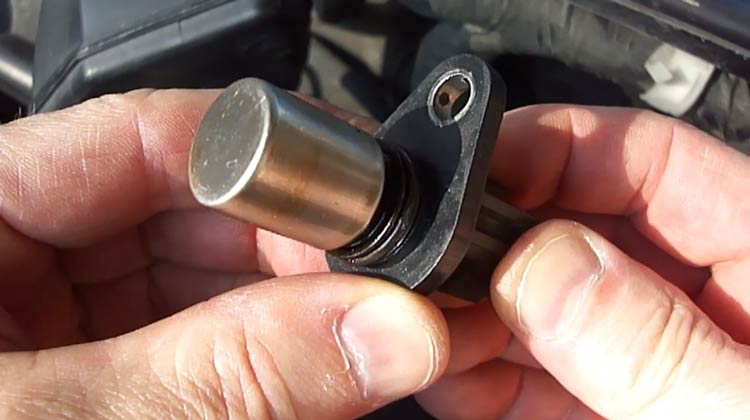If your car is feeling a bit sluggish lately, or if you’ve been experiencing problems with starting it, the culprit may be a bad camshaft position sensor. This component is responsible for sending signals to the engine’s computer telling it when to start and stop the fuel injection process. When it goes bad, your car will not run as smoothly as it should. Here, I will discuss the symptoms of a bad camshaft position sensor and provide some tips on how to fix it.
Camshaft Position Sensor:
The central function of the camshaft sensor is to work in tandem with the crankshaft sensor on your car. Its goal is to achieve a very accurate assessment of the camshaft’s position. As a result, it produces signals that are identical to those produced by the crankshaft position sensor. It aids in determining when the engine’s first cylinder reaches top dead center timing.
The engine’s components use the information provided by the camshaft for a variety of purposes. The data, in essence, aids in the commencement of the injection process during the sequential injection. It also controls the knock control via actuation signals from the pump nozzle injector system.
The Hall principle is the fundamental operating theory of a camshaft sensor. The rotation of the camshaft’s ring gear changes the voltage level of the Hall IC in the sensor head. This causes a change in control unit voltage transmission.
A computerized system reads the information and compares it to historical readings to record it. To put it another way, a faulty camshaft can also affect the operation of the crankshaft position sensor, resulting in numerous issues with your vehicle’s overall performance when it comes to engine performance.
Symptoms of a Bad Camshaft Position Sensor: Depth And Detailed Guideline
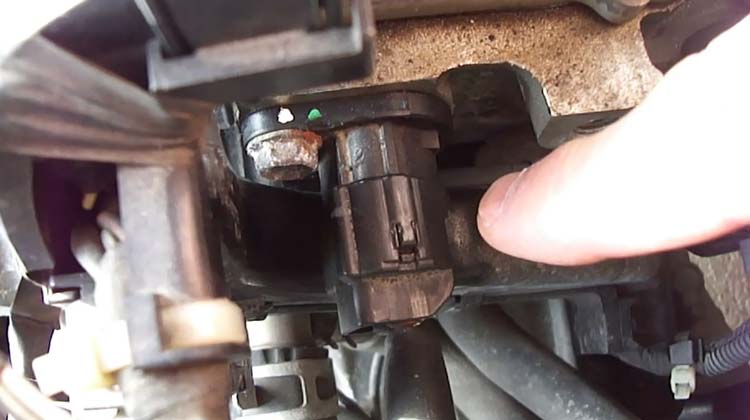
This guide will show you all the symptoms of a bad camshaft position sensor, as well as the expected replacement cost. The camshaft is a crucial component of a car’s engine. Its main responsibility is to manage the intake and exhaust valves. It may also operate other components including the fuel pump, oil pump, and power steering pump.
The camshaft is vital to a car’s engine, as it sets the intake and exhaust rate. Therefore, if something is wrong with the camshaft, many problems can arise. It might be difficult to distinguish the camshaft from the crankshaft when looking at them together, not only due to their similar names but also because they are inextricably linked. A timing belt or timing chain connects the camshaft to the crankshaft. This is critical since the crankshaft also controls the piston’s placement, synchronizing the whole operation.
If the camshaft position sensor is not working, it may disrupt the smooth process, causing various symptoms. Bad camshaft position sensors can cause a variety of problems, from engine misfires to poor fuel economy. In this guide, I’ll cover everything you need to know about bad camshaft position sensors, including replacement cost and diagnostics.
If you notice any of the following symptoms, it’s time to take your car to a mechanic and have them check the camshaft position sensor.
- Check Engine Light On
- Blocked Engine
- The Car Won’t Start
- Rough idle
- Poor Gas Mileage
- Decrease Engine Power
Now I will describe all these symptoms in detail:
Check Engine Light On:
The most typical indication of a faulty camshaft position sensor is the activation of the check engine light. When the lights go on, it will usually be difficult to determine what the trouble is. Scan your car for any OBD2 error codes with an OBD2 scanner to obtain a clearer picture.
You should visit a mechanic if you do not have an OBD2 scanner. If at all possible, avoid driving your car if the light is on since additional harm may be caused. If you know why the check engine light is on, you might be able to drive the car to a shop. But only do this if a professional mechanic has said it’s okay.
Your car has a feature called “limp mode” that kicks in when it’s detected that something is wrong. This limits the power and speed to prevent further damage. The limp mode is engaged when you can drive your car to the nearest shop. Just like the check engine light, it might go off tomorrow when you turn your engine off and on again. This doesn’t mean the problem is gone, though. It just means that the camshaft position sensor might have been jarred into working correctly again.
Blocked Engine:
A more serious but thankfully less frequent symptom is when the engine stalls. This could happen when you are stationary in a parking spot or driving on the road. The latter scenario can be dangerous, so if your engine unexpectedly stalls, do not drive the car again until it has been checked by a professional.
This problem is caused when no combustion occurs as no fuel or air enters the combustion chamber at the right moment. The engine will make a clicking noise as it tries to start but will fail. It is vital not to try and restart the engine as this can cause further damage.
The Car Won’t Start:

If you are entirely unable to start your car, it might be that the camshaft position sensor has failed. This problem is often accompanied by the check engine light is on or flashing. As with a blocked engine, you should not try to start your car as this could cause further damage.
There are many reasons a car won’t start, just like there are several factors that can contribute to any other symptom. A starter could be malfunctioning, the fuel filter might be clogged, or the battery may need to be replaced these are only a few potential causes. This is why it’s important to visit a professional and have them properly diagnose the problem before attempting any repairs.
Rough idle:

A less common but still noticeable symptom of a bad camshaft position sensor is when the car idles roughly. The engine may shake or vibrate when you are stopped at a light or in a park. This is caused by improper combustion in the cylinders due to the sensor not providing the correct information to the engine control unit.
A nice and steady idle will go largely unnoted by the driver until everything is in order. When driving, though, a rough idle will be quite apparent. If the camshaft position sensor is faulty, the engine will run roughly due to unsynchronized combustion in the cylinders.
A rough idle might be caused by a faulty fuel pump, EGR valve, or another problem with the engine. Whatever the cause, it’s essential to understand what causes the rough idle. To discover if this is the case, you’ll need some extra equipment and testing. The average driver won’t have access to this, so it’s best to take your car to a professional.
If you’re experiencing any of these symptoms, then it’s time to replace your camshaft position sensor. These sensors are not expensive, and the replacement process is relatively straightforward. It’s still a good idea to visit a professional to have the work done, though. They will be able to properly diagnose the problem and ensure that the replacement sensor is installed correctly.
Poor Gas Mileage:
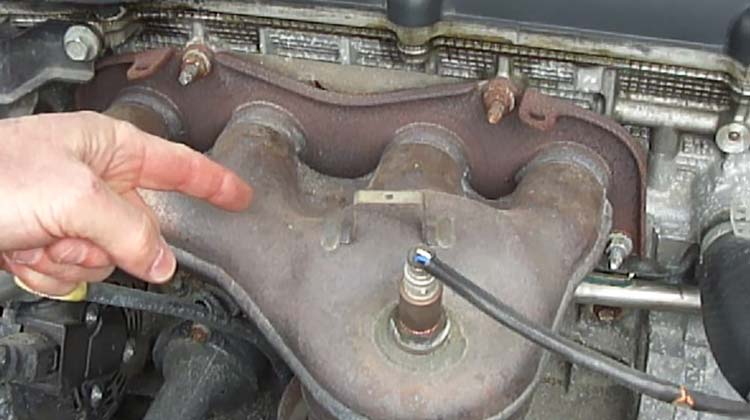
Another symptom of a bad camshaft position sensor is reduced gas mileage. This is caused by the engine not running as efficiently as it should be. The ECU relies on the sensor to provide accurate information about engine timing. When the information is inaccurate, the engine will run less efficiently, and fuel consumption will increase.
If you notice that your car’s gas mileage has decreased recently, it might be time to replace the camshaft position sensor. This is a relatively inexpensive repair that can be done relatively easily. However, it’s still a good idea to visit a professional to have the work done. They will be able to properly diagnose the problem and ensure that the replacement sensor is installed correctly.
As you can see, there are several symptoms of a bad camshaft position sensor. If you notice any of these problems with your car, it’s time to visit a professional. They will be able to properly diagnose the problem and ensure that the replacement sensor is installed correctly. Don’t put off this repair as it can lead to more significant problems down the road.
If you’re still having trouble starting your car or if it’s idling roughly, then there might be another issue at play. It’s always best to visit a professional and have them properly diagnose the problem. They will be able to help you get to the bottom of the issue and get your car back on the road. Thanks for reading, and we hope this article was helpful.
Decrease Engine Power:
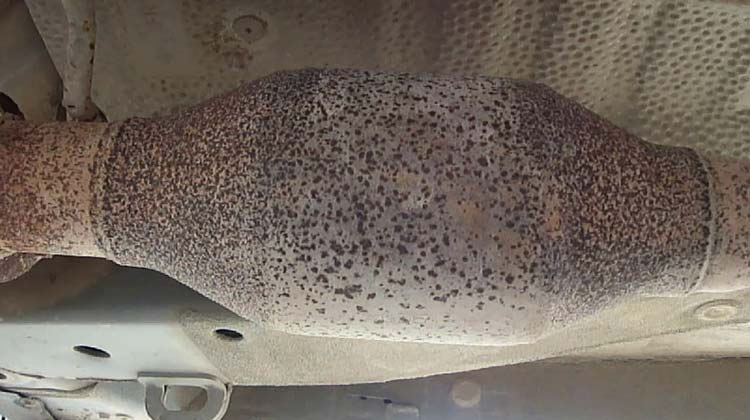
A final symptom of a bad camshaft position sensor is a decrease in engine power. This is caused by the ECU not receiving accurate information about engine timing. When this happens, the engine will run less efficiently, and power will be reduced.
Reduced engine power occurs in two forms. The reduced power is caused by the limp mode as a precaution, or no message or warning light is detected in the dashboard, and the automobile moves slowly.
Your car may have less power when accelerating, or the engine may slow down when you’re coasting or idling. These are both symptoms of ineffective combustion and misfires in the cylinders of your car’s engine. You might also feel vibrations while accelerating. If you notice all of these symptoms recently, it might be time to replace the camshaft position sensor.
Don’t ignore these symptoms of a bad camshaft position sensor. If you notice any of them, it’s time to visit a professional. They will be able to properly diagnose the problem and ensure that the replacement sensor is installed correctly. Thanks for reading, and we hope this article was helpful.
Fixing a Bad Camshaft Position Sensor:
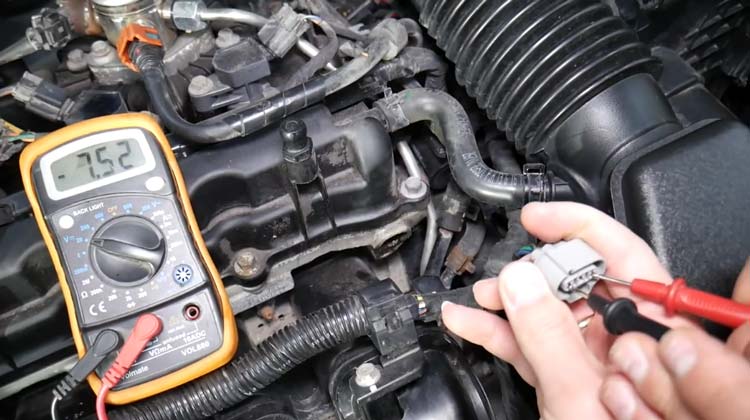
If you’ve determined that your car has a bad camshaft position sensor, there are a few things you can do to fix it. As I mentioned earlier, these sensors are not expensive, and the replacement process is relatively straightforward. It’s still a good idea to visit a professional to have the work done, though. They will be able to properly diagnose the problem and ensure that the replacement sensor is installed correctly. Before going to mechanics for replacement, you can also follow some tips below:
Clean the Sensor:
If the sensor is covered in dirt or debris, it might not be able to function properly. You can try cleaning the sensor with a soft cloth and some electronic cleaner. Be careful not to damage the sensor while cleaning it.
Check the Connections:
If the problem is with the wiring or connectors, you can try checking the connections. Make sure that all of the connectors are properly attached and that there is no damage to the wiring.
Inspect The Sensor:
Inspect the sensor itself for physical damage. If there are any cracks or other damage, it will need to be replaced. If neither of these issues is present, then the most likely problem is a faulty sensor.
Replace the Sensor:
If neither of these methods works, you might need to replace the sensor. This can be done relatively easily by following the instructions in your car’s manual. Again, it’s still a good idea to visit a professional to have the work done. They will be able to properly diagnose the problem and ensure that the replacement sensor is installed correctly.
Replacing a Camshaft Position Sensor:
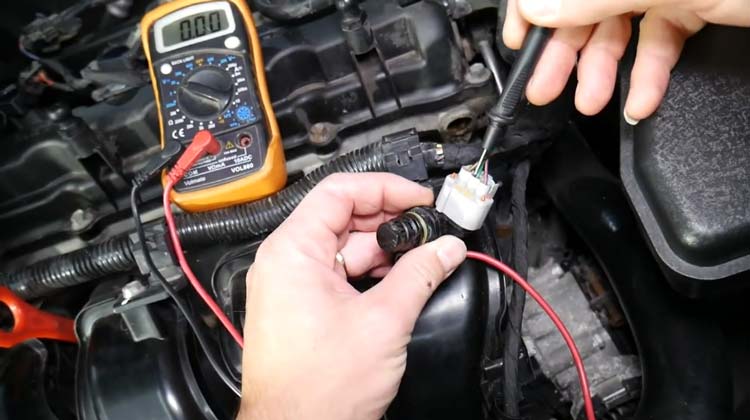
- Disconnect the positive and negative battery cables.
- The sensor is usually located on the top, front, or rear part of the engine. There will likely be a 2-3 wire connector attached to it.
- To disconnect the wires from the sensor, release the tab on the sensor.
- Unscrew the mounting bolt which attaches the sensor to the engine. It’s typically an 8mm or 10mm bolt.
- Remove the sensor with a little twist.
- Lubricate the o-ring of the new sensor with a bit of engine oil.
- To install the new camshaft position sensor, simply bolt it into place.
- Connect the wire connector to the sensor again.
- Hook up the negative and positive battery terminals again.
Replacement Cost of a Camshaft Position Sensor:

It’s not difficult to change the sensor, but it may be inconvenient to get to. This implies you’ll need some perseverance while changing it.
On average, buying a new sensor will cost $90 to $140 and the labor cost should be around
$70 to $100. The cost of the replacement is determined by both the type of car and the mechanic. Premium brands and dealerships are typically more pricey.
Regardless of which option you choose, expect to spend $150 to $250 on a camshaft position sensor replacement.
FAQs:
Q: Can I replace a camshaft position sensor myself?
A: If you’re familiar with car repairs, you can replace the sensor yourself. Otherwise, it’s still a good idea to visit a professional. They will be able to properly diagnose the problem and ensure that the replacement sensor is installed correctly.
Q: What will happen if I don’t replace a bad camshaft position sensor?
A: If you don’t replace a bad camshaft position sensor, the engine misfires will continue. The check engine light will stay on. You might also experience reduced fuel economy and engine performance. In some cases, the engine might stall or not start at all. These issues can cause further damage to your car, so it’s best to replace the sensor as soon as possible.
Q: How many camshaft sensors are there?
A: There is usually only one camshaft position sensor in a car. However, some cars have two sensors – one for the intake camshaft and one for the exhaust camshaft. These sensors are typically located on the top, front, or rear part of the engine.
Q: What does a camshaft position sensor do?
A: A camshaft position sensor is an electronic device that monitors the position of the camshaft. It tells the engine computer when to fire the spark plugs and inject fuel. This helps ensure that the engine runs smoothly and efficiently.
Q: What’s the difference between a camshaft and a crankshaft position sensor?
A: A crankshaft position sensor monitors the position of the crankshaft. It tells the engine computer when to fire the spark plugs and inject fuel. This helps ensure that the engine runs smoothly and efficiently. A camshaft position sensor monitors the position of the camshaft. It tells the engine computer when to fire the spark plugs and inject fuel. This helps ensure that the engine runs smoothly and efficiently. The main difference between the two is that a camshaft position sensor monitors the position of the camshaft, while a crankshaft position sensor monitors the position of the crankshaft.
Conclusion:
A bad camshaft position sensor can cause several engine problems. If you suspect that your sensor is failing, it’s best to visit a professional mechanic. They will be able to properly diagnose the problem and ensure that the replacement sensor is installed correctly. Expect to spend $150 to $250 on a camshaft position sensor replacement. If you are comfortable replacing the camshaft position sensor, you can save on labor costs by doing it yourself. Remember to change the sensor as soon as possible to avoid further engine damage.
I hope this discussion helped understand the symptoms of a bad camshaft position sensor. If you have any further questions, feel free to leave a comment below.
